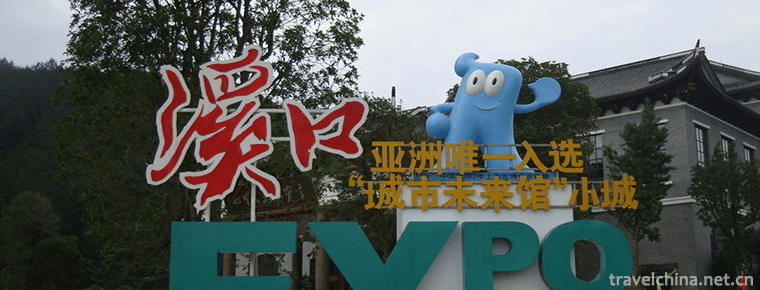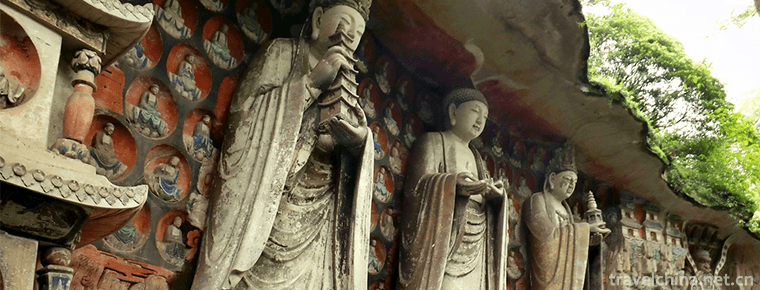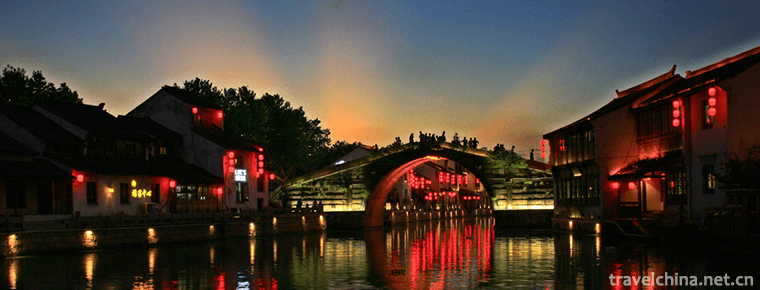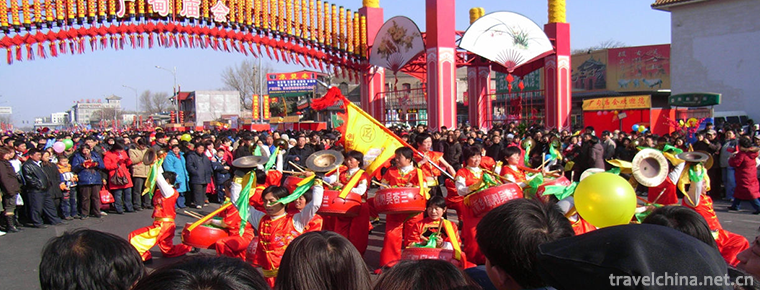Drawing Shantou Drawing
Drawing Shantou Drawing
Drawing is a kind of embroidery, also known as "lace". Legend has it that yarn drawing originated in Italy, France and Portugal, and was developed on the basis of folk embroidery in the Middle Ages.
On November 11, 2014, yarn drawing was approved by the State Council and listed in the fourth batch of national intangible cultural heritage list.
Basic introduction
Drawing is a European embroidery knitting process brought by European missionaries at the end of the nineteenth century and the beginning of the twentieth century. In 1894, British missionary Ma Menglan set up a church handicraft school in Yantai to teach drawing skills. Call European embroidery "drawing". It is a kind of embroidery, also known as "lace". It is a daily-used arts and crafts product. It is also a traditional export commodity of our country. Yarn drawing products are exported to more than 100 countries and regions on five continents of the world and enjoy a high reputation in the world. Drawing yarn is not only a variety of colors, fine production, but also beautiful and practical. It is the crystallization of artistic creation and wisdom. It is a brilliant and colorful art flower in the treasure house of China's arts and crafts.
Drawing is a weaving and embroidery process. Originated in the era of slavery, according to Shangshu, more than 4000 years ago, the system of dress and embroidery stipulated "painting and dress". Among the silk fabrics and clothes unearthed from Mawangdui No. 1 Tomb of the Western Han Dynasty in Changsha, there are as many as 40 pieces of clothes, paintings and embroidery. During the Spring and Autumn Period, the State of Wu was established in Suzhou, where embroidered garments were used as costumes. From the silk fabrics unearthed in 1956 and 1978 in Suzhou Dolomite Tower and Ruiguang Tower. The flowers are embroidered on the top, using a variety of stitching methods, such as needle-splicing, needle-winding, needle-laying, needle-grabbing and so on. Not only were they able to embroider flower patterns at that time, but they also mastered the skills of drawing embroidery. These suffice to prove that China's drawing embroidery has a long history and has a high level of craftsmanship at an early stage.
Drawing in Europe was developed on the basis of folk embroidery in the fourteenth century. Originated in Italy, Venice is a popular yarn drawing, kaleidoscope. Subsequently, in Madila, Portugal, spinning of cotton and linen materials, namely Madila spinning, was also developed. It is knitted with spinning yarn, or with linen or cotton cloth and other materials, according to the pattern design, the warp or weft of the pattern part is taken out, and then connected to form a hollow decorative pattern, or with carving embroidery and patching flowers, it is made into famous kinds of tablecloth, curtains, plate cushions, handkerchiefs, chair and clothing and other daily necessities. It was introduced into the coastal ports and nearby villages around 1885. By 1912, there had been considerable development in China. Since the 1920s, in the areas of Shanghai, Jiangsu and Zhejiang, it has been commonly called "lace". In Shandong, Guangdong and Zhejiang, it has been called "drawing yarn". It is also commonly called "lace embroidery". After liberation, our country draws yarn continuously to absorb the characteristics of folk embroidery technology, improve pattern design and technology skills, and make it have our own national characteristics, products are exported to dozens of countries and regions on five continents. Because of its fine workmanship and elegant patterns, it is well-known in the world. The main producing areas are Shandong, Guangdong, Jiangsu, Zhejiang, Beijing, Tianjin, Dalian, Fujian, Sichuan and Harbin. Every product has its own style.
History of drawnwork
Since the rise of spinning in Chaoshan area, with the distortion of Shantou semi-colony, Chaoshan spinning has developed rapidly. Chaozhou cushion embroidery's unique art and novel style are appreciated by the novelty-loving Westerners. As a result, foreign businessmen and Chinese-funded enterprises have set up foreign banks and various yarn drawing factories in Shantou, such as bamboo shoots after a spring rain. It made Chaoshan yarn drawing thrive twice in 1912-1914 and 1936-1941. At that time, Yanghang and Company were all over Shantou, and yarn-drawing workers were all over the Qilu area, flourishing for a while. However, just at the time of the prosperous development of Chaoshan Drawing Yarn, the first reason was the occurrence of the First World War, which destroyed the western economy and brought the market to a standstill. In the second boom, in the competition between Chinese and foreign firms, big fish eat small fish. Many Chinese firms were controlled by foreign firms because of insufficient funds. The income of spinning workers was small and insufficient to maintain the lowest living standard. Many people were unwilling to do this "hand leather, money and silver" work. Finally, due to the Pacific War launched by Japan in 1941, shipping routes were blocked, cargo could not be shipped, and Chaoshan Drawing Yarn was on the verge of interruption. This is the reason for the second rise and fall of Chaoshan Drawing Yarn.
Qing Guangxu
During the twelve years of Guangxu (1886) in Qing Dynasty, the wife of a German pilot in Shantou found that Chaozhou embroidery art had quotation value, so she imparted some of her knowledge and techniques to the women, and made hand towels and other thorough embroidery products. Later, embroidery workers combined the drawing technology with Chaozhou embroidery art. After continuous exploration and practice, this technique of combining Chinese and Western skills is called Chaozhou drawing. Guangxu 25 years (1899), Shantou set up Caicheng Drawing Company. In the 29th year of Guangxu (1903), Ding Huilong, a Chenqiao native of Chaozhou, founded the Haihe Branch in Chaocheng and became the first yarn drawing shop in Chaozhou. In the long years since then, Chaozhou Drawing has gradually developed into a skill that young and middle-aged women in Chaoshan can generally master, and it is also an important family sideline income for millions of households in urban and rural areas. It is said that in the old Chaozhou, women were more skilled in embroidery. When they were about ten years old, they learned embroidery techniques under the guidance of their mothers and prepared their own wedding dresses. By the time adults get married, they are good embroiderers. In the past, most of the masters of Chaozhou embroidery were men, as documented. For example, in the late Qing Dynasty, the government held a North-South Arts and Crafts Competition in Nanjing. Twenty-four Chaozhou male embroidery workers won the title of "No. 1 embroidery prize" in China's "embroidery forest".
classification
It can be divided into four categories: embroidery, patching, knitting and mixing. Among them, embroidery includes carving embroidery, drawing embroidery, shadow needle embroidery, color flat embroidery, double-sided heterochromatic embroidery, stitching embroidery and so on; supplementary embroidery includes carving and patching, patching and supplementary embroidery; knitting category includes ten thousand strands of silk, hammer lace, mesh buckle, filament, knot lace, needle knot lace, etc; mixed category includes carving embroidery inlaying knot, knotting embroidery embroid
Drawnwork skills
Varieties of Drawing
Drawing yarn is a practical handicraft. From its scope of application and practical use, the main varieties of products are table cloth, dishcloth, quilt cover, bed cover, pillow bag, handkerchief, towel, sofa cover, cushion, curtain, piano cover, apron, shawl, door curtain and so on, as well as various embroidered clothing, Crochet jacket, apron and various small lace inserts.
Main uses
Legend has it that yarn drawing originated in Italy, France and Portugal, and was developed on the basis of folk embroidery in the Middle Ages. Drawing is based on the design drawings, the warp or weft of the base cloth is taken out as appropriate, and then connected to form a hollow decorative pattern. Or embroidered, patched and carved on cotton and linen fabrics to make tablecloths, curtains, tray mattresses, bedspreads, pillowcases, handkerchiefs, clothing, etc. It was introduced into China's coastal ports and nearby villages around 1885.
Main producing areas
There are Shandong, Guangdong, Jiangsu, Zhejiang, Beijing, Tianjin, Dalian, Fujian, Sichuan and Harbin. Every product has its own style.
Drawnwork in Chaozhou
introduce
Chaozhou yarn drawing is the product of the combination of traditional Chaozhou embroidery and European yarn drawing. It has a history of 100 years. It is known as the flower of the South for its exquisite skills, light and elegant. Nowadays, Chaozhou Kaiyuan Temple has Chaozhou embroidered mantle tents and banners in the Tang Dynasty. Chaozhou yarn drawing technology has a long history. Back to the Tang Dynasty, Chaozhou embroidery was very popular and handed down from generation to generation. During the Guangxu period of the Qing Dynasty, Chaozhou embroidery artists began to integrate the traditional embroidery techniques introduced from western countries with the traditional embroidery techniques of Chaozhou. Through the creation of several generations, the embroidery artists passed on from generation to generation, and the unique folk crafts were formed by pushing out the old and bringing forth the new. Because it mostly uses cotton, linen, fabrics, glass yarn as fabrics, white or light-colored yarn embroidery, folk commonly known as "white yarn", in order to be different from traditional tide embroidery "velvet". Its lengthy production process and manual operation mode are still difficult to replace by modern technology, and it is a valuable heritage in the field of handicraft.
Chaozhou Drawing Yarn mainly includes table cloth, pillowcases, towels and other more than 40 kinds of products. Its unique composition, delicate needling, elegant tone, complete specifications, beautiful and practical, is a popular commodity and handicraft products, exported to nearly 100 countries and regions in the world.
Chaozhou is the main yarn producing area in China. Many new yarn drawing methods and needles have been successfully innovated, created and popularized. Only Chaozhou Yarn Drawing Area can complete the whole process successfully. The 72*108 inch glass yarn high-grade hand-embroidered tablecloth "Shuangfeng Dynasty Peony" embroidered by Chaozhou Drawing Woman Workers won the Gold Prize of the 32nd Munich International Handicraft Exposition in 1980 and the first gold prize of Chinese handicraft in the world.
In 1981, he won the first national prize cup for arts and crafts. Many other products have won provincial and ministerial awards. It enjoys the reputation of "Famous Flowers of Southern China".
Characteristic
Chaozhou yarn drawing is characterized by drawing out some warp and weft threads in the fabric according to a certain pattern, locking the opening with needle and thread, and embroidering with pattern. Chaozhou yarn drawing is characterized by embroidery cushion convexity and drawing, multi-layered carving and exquisite space art, ingenious use of a variety of needle techniques and complex and exquisite design layout, resulting in a variety of shapes and lifelike patterns.
Main varieties
The main varieties of Chaozhou yarn drawing are towels, tablecloths, embroidered clothes, bedspreads, pillowcases, cushions, meal sets, etc. The products are exported to the United States, Japan, Italy, Australia and other countries. Many products have been presented to foreign guests as national gifts for many times. In 1972, Premier Zhou Enlai presented Chaozhou top-quality glass gauze tablecloth as a national gift to the Queen of Iran. In 1980, at the 32nd International Handicraft Exposition in Munich, 72 *108 inch high-grade glass embroidered tablecloth "Shuangfeng Chao Peony" was praised as "the world's unique and most sophisticated product" and won a gold medal. This work depicts 625 phoenixes with different gestures, such as singing, inhabiting, dancing and flying, accompanied by 276 peonies and a large number of grapes and flowers, showing phoenix's artistic conception of welcoming spring and flourishing flowers. Chaozhou Drawing has always been an export-oriented commodity. In the past 20 years, Chaozhou Drawing has been exported to nearly 100 countries and regions in the world.
Relevant provisions
Circular of the Ministry of Foreign Trade and Economic Cooperation on the Issue of List of Export Enterprises Operating Drawing Products in 1998
( Letter No. 43 of Foreign Trade and Economic Management, February 12, 1998)
Provinces, autonomous regions, municipalities directly under the Central Government and planned municipalities'foreign economic and trade commissions (offices and bureaus), Commissioner offices, Quota Licensing bureaus, China Chamber of Commerce for Import and Export of Light Industrial and Crafts, Association of Foreign Investment Enterprises, and directly affiliated companies of various ministries and commissions:
In order to enhance the export competitiveness of our drawing products and further expand our exports on the basis of maintaining the export management order of our country's drawing products, the List of Exporting Enterprises Operating Drawing Products in 1998 is issued to you in accordance with the relevant provisions of the Provisional Regulations on the Export Management of Drawing Products (1997) No. 614 of the Foreign Economic and Trade Administration of our Ministry (see annex). As follows:
1. According to the provisions of Article 3 (1), (3) of the Interim Regulations on Export Management of Drawing Products, the enterprises directly engaged in export of Drawing Products in 1998 are determined as follows: (1) According to customs statistics, the export amount of Drawing Products in 1994, 95 and 963 is sorted according to the size of the export amount, reaching 60% of the total export amount of the whole country and the average export amount reaching 500,000 US dollars (see the list of annexes); (2) ) Manufacturing enterprises and foreign-invested enterprises with export right of drawing products approved by the Ministry of Foreign Trade and Economic Cooperation. If the other enterprises want to export, they must entrust the foreign trade enterprises listed in the appendix list to act as agents. Both sides sign the agency agreement and report it to the Chamber of Commerce of Light Industry and Technology for the record.
2. The Chamber of Commerce for Import and Export of Light Industrial Crafts shall formulate specific industrial coordination measures for the export of drawn yarn products, focusing on coordinating export prices and markets, and tracking and supervising the implementation of export enterprises.
3. All license-issuing organs authorized by the MOFTEC shall issue export licenses for drawing products in strict accordance with Article 1 of this Circular and the relevant provisions of license administration.
4. This Notice shall come into force on March 1. If there are any problems in the implementation, please report them to the Ministry (Department of Trade Management) in time.
Annex: List of Export Enterprises Operating Drawing Products in 1998
Publishing Department: Ministry of Foreign Trade and Economic Cooperation (including the former Ministry of Foreign Trade and Economic Cooperation) (changed) Publishing Date: 12 February 1998
Date of implementation: 12 February 1998 (Central Regulations)

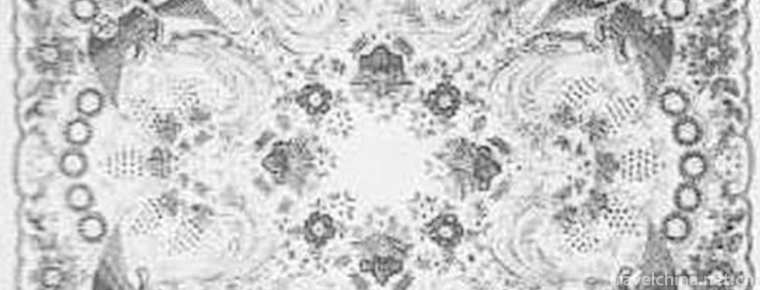
-
Fenghua Xikou Tengtou Tourist Scenic Area
Fenghua District, Ningbo City, Zhejiang Province, is under the jurisdiction of the established towns, the first batch of famous national landscape tourism towns.
Views: 173 Time 2018-12-07 -
The Dazu Rock Carvings
Dazu Stone Scenic Area is a religious cliff sculpture in the late Tang and early Song Dynasty, with Buddhist themes as the main theme, especially the Beishan Cliff sculpture and Baoding Mountain Cliff.
Views: 204 Time 2018-12-12 -
the Capital Cities and Tombs of the Ancient Gaogouli Kingdom
Gaogouli is located in Ji'an City, Jilin Province. It includes domestic cities, Wandu Mountain City, 14 Royal mausoleums and 26 noble tombs. Domestic city and Wandu Mountain City .
Views: 116 Time 2019-01-12 -
Huizhou Seaside Hot Spring Resort
Huizhou Coastal Hot Spring is a large-scale comprehensive resort built according to the national standard of "AAAAAA" scenic spots and five-star hotels. It integrates tourism and vacation.
Views: 207 Time 2019-01-19 -
Qingming Bridge Ancient Canal Scenic Area
Qingming Bridge Ancient Canal Scenic Area is located at the southern end of Wuxi city center, covering about 44 hectares of scenic area. The scenic spot is composed.
Views: 161 Time 2019-02-07 -
Changdian Temple
Changdian Temple Fair is a traditional folk custom and folk religious belief activity in Beijing. Among the many temple fairs in the old capital city, only the temple fairs in Changdian.
Views: 172 Time 2019-04-16 -
Dagudarengrab
Dagudalenglei Biao is the only Creation Epic discovered, sorted out and published by the De'ang people up to now. It is more than 1200 lines long. The epic is different from.
Views: 392 Time 2019-04-22 -
Southwest Jiaotong University
Southwest Jiaotong University is a national key university directly under the Ministry of Education. The first batch of national "double first-class", "211 project", "characte.
Views: 160 Time 2019-08-31 -
Red Army ferry scenic spot in Cangxi County
Cangxi Red Army ferry is located in Cangxi County, Sichuan Province. There is an ancient ferry by the Jialing River in Tashan Bay 3 km southeast of Cangxi city. Close to the mountain and by the water, the terrain is very dangerous, the rocks are steep, and the trees are green. Jialing River from north to south, beautiful scenery..
Views: 306 Time 2020-11-08 -
Historical evolution of Meishan
The establishment of Meishan government began in the third year of Jianwu (496) of the Southern Qi Dynasty. Qitongzuo county was built in the south of Wuyang County, Qianwei county. In the ordinary period of Nanliang (520-527), qitongzuo county was renamed as Qitong County, and Qitong county was established with the same county..
Views: 278 Time 2020-12-18 -
Dazhous first industry
In 2019, the annual grain planting area of Dazhou city is 556900 hectares, an increase of 0.3% over the previous year. Among them, rice was 191500 ha, an increase of 0.2%; maize was 137500 ha, an increase of 0.9%; potato was 162000 ha, a decreas.
Views: 191 Time 2020-12-20 -
Dazhou highway
Dazhou is one of 179 main hubs of highway transportation in China and one of 12 regional secondary hub cities in Sichuan Province. It is a secondary logistics center city in national layout planning and an important logistics hub city in Western Chin.
Views: 212 Time 2020-12-20
